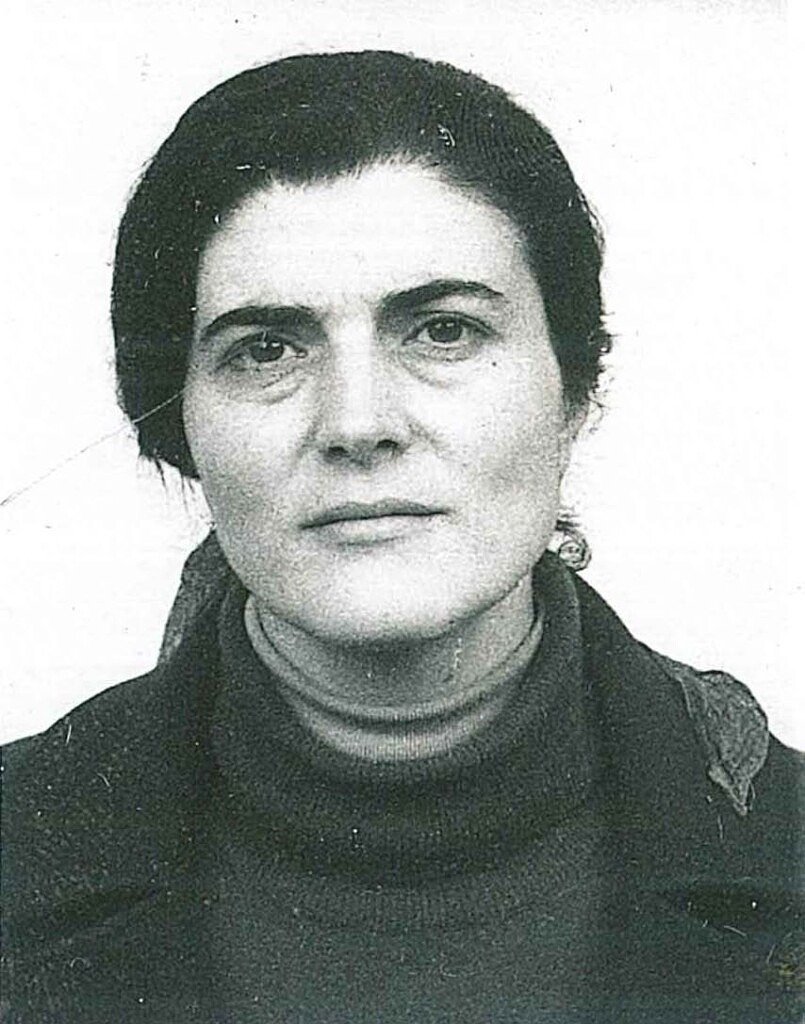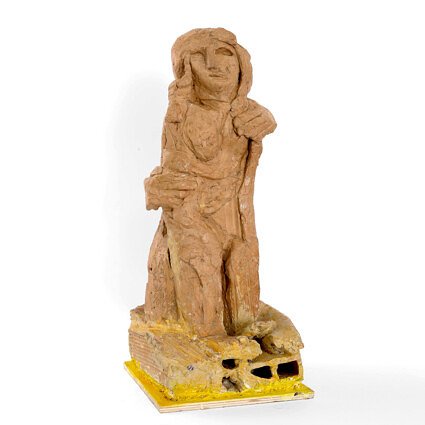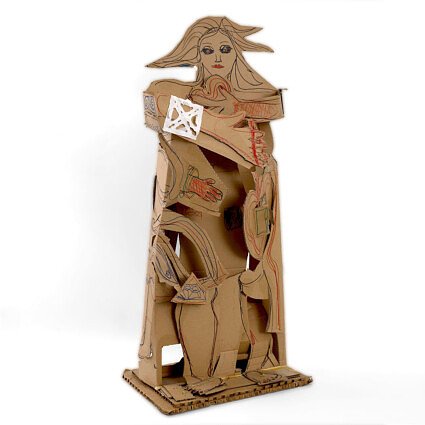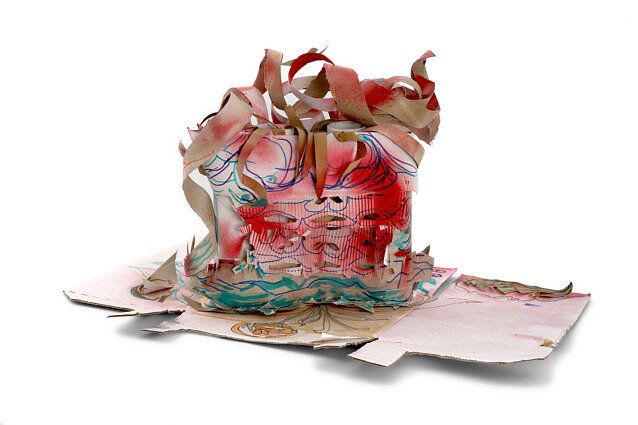Antonietta
Orsatti
Antonietta Orsatti was born in Casacanditella (Chieti) in 1940. She began as a self-taught artist, and later followed a ceramics course directed by Tommaso Cascella at the Art Institute of Chieti. She enrolled at the Academy of Fine Arts in Rome where she studied sculpture with Pericle Fazzini and Goffredo Verginelli. Meanwhile, she also attended a fresco course the School of Decorative Arts in Via San Giacomo. In 1967 she graduated with a thesis about the stonemason Felice Antonio Giuliante (1885-1961). In the same year she married and returned to live permanently in Abruzzo, where she taught drawing and art history in high schools. Since then, she has worked independently, with little involvement in any exhibition activity.
She developed an original process of shaping hollow bricks which, engraved and modelled while still fresh and then fired in a kiln, could then be used as an expressive support for her stories. On canvases she paints episodes in encaustic, linking figures with the associative geometry of her dreams. In more recent years she has been working on drawings and sculptures using recycled cardboard.
Since 2021 she has resumed sculpting stone, completing a cycle of high reliefs.
In 2024 she holds her first solo show in Rome, in the independent space Lettera_E, curated by Paolo Cortese.

“As in the phases of civilization, after her ‘stone age’ and her ‘brick phase’, Antonietta, having reached full maturity, what some would call ‘old age’, began her amazing ‘age of cardboard’, and made a qualitative leap, as if she had now eliminated all the fallout from academia and discovered her real identity.
After having sculpted Maiella stone for years and then the tombstones given to her, if I understand correctly, by a priest, many years earlier, Orsatti began to collect discarded materials: second-hand packaging cardboard, poor materials that the world no longer sees.
A perfect example of this new journey, are her cycles of drawings on toilet paper rolls (almost impossible to preserve or restore), or her sculptures made with the cardboard cylinder from the same rolls. Using an object so humble that it does not even have the right to a proper name, and which goes by the name of ‘roll’, or perhaps ‘cardboard tube’…
Her hands are able to transform any kind of material and charge it with meaning.
‘Used’ cartons (rather than packaging cartons), such as the ones for bottles, become theatres of the absurd, miniature stage sets that evoke mysterious stories and hidden worlds”
_A.Accatino






